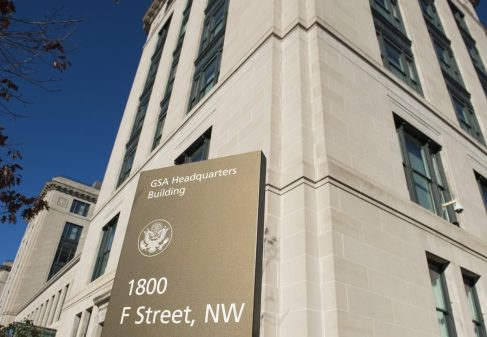The DATA Act could help restore faith in U.S. government, officials say

With agencies now required to report their spending data in compliance with the Digital Accountability and Transparency Act, it’s a chance for the federal government to earn some trust from the American people.
It used to be that most Americans trusted their government, Rep. Gerry Connolly, D-Va., explained at the 2017 DATA Act Summit, recalling the days of John F. Kennedy.
“It starts with this: renewal of faith in government,” he said. “A democracy cannot survive with the kind of cynicism we have about our government today.”
More than 70 percent of Americans used to believe the federal government was doing its job. But then things like the Vietnam War and the Watergate scandal tarnished that reputation, and it’s never recovered, explained Rob Cook, commissioner of the Technology Transformation Service within the General Services Administration.
“Back when I was growing up, we used to trust the government,” Cook said in a discussion at the summit. “It’s a dangerous trend. And it’s dangerous because we depend on our institutions and the health of those institutions. And our trust in them is important to keeping them healthy. But that trust is no longer something that is presumed the way it used to be.”
But the DATA Act — which requires agencies to use common standards to report their various spending and publish it on a centralized repository all federal financial activity on USAspending.gov — can have a positive effect in two ways: by demonstrating competency and transparency, Cook said.
“The implementation of the DATA Act is a shining example of how the government can do both of those,” he said, by doing “high quality work for a reasonable price” in the full view of the public.
“The project to implement the DATA Act was an exception” to typical government project management, Cook said. “It was on time, it was under budget, and it delivered on its promise. Not many government projects can say that.” The TTS commissioner pointed to agile, user-centered development processes as the key to that success.
Until recently, there was no simple way to get all of this spending information, and it will fundamentally change the way many government entities — appropriators, chief financial officers, inspectors general and program managers, to name a few — measure the impact of tax dollars on government programs.
“The spending transparency is good for our democracy, and it will change how Congress, NGOs, the public relate to spending,” Cook said.
Sen. Rob Portman, R-Ohio, called it a tool to measure the performance of the executive branch. “I think it will also help us to focus specifically on where resources are being wasted, and where we can spend money more effectively,” he said, particularly as the budget continues to inflate.
Rep. Darrell Issa, R-Calif., echoed that point in the context of government programs in high-risk of failure. “You can’t fix a problem until you properly quantify the problem.”
So now that the standards are in place and agencies are in compliance with them in their reporting, the resulting openness and uniformity of the data starts a new chapter.
“There’s still a lot of work to be done beyond just the federal spending information being exposed,” said Bryce Pippert, vice president at Booz Allen Hamilton.
That means finding novel uses of this new resource, but it also means getting word out beyond the Beltway.
“For the most part, I would say to the 98 percent of the folks beyond the Beltway, this is still data,” said Ann Ebberts, CEO of the Association of Government Accountants. “It is not yet information to them…there’s more efforts to go to really speak to the everyday citizen.”
“We need to connect, we need to analyze it, we need to use it, we need to get it out there,” Pippert said.






